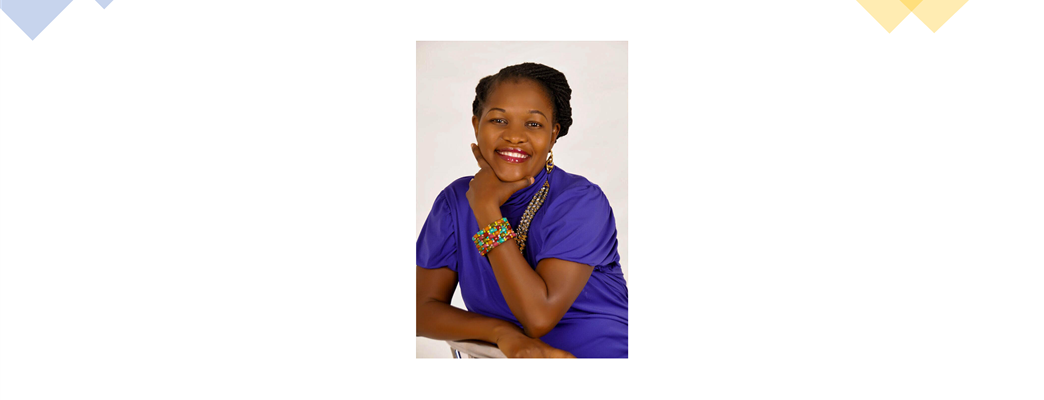Qn: Who are you and what do you do?
My name is Julianne Sansa Otim and I am a Senior Lecturer in Computer Networks at Makerere University where I teach, undertake research and consultancy related to applying Information and Communication Technologies (ICTs) to different development contexts. I also serve on the boards of Research and Education Network for Uganda (RENU), the UbuntuNet Alliance and in my Church Seeta Miracle Center.
Qn: How have you been a part of the Norwegian funded NORHED program?
In 2012 I led a collaboration of three institutions in East Africa and one in Norway, to win a NORAD seed grant worth 300 000 NOK to implement a feasibility study on "Improving East Africa's Weather Information Management through the Application of Suitable ICTs". This enabled us to work with several stakeholders in the region and in Norway to design a more impactful project.
In 2013, our research team won a 7-year research grant worth 20 million NOK from NORAD for a project entitled “WIMEA-ICT: improving Weather Information Management in East Africa for effective service provision through the application of suitable ICTs”. This was under the Norwegian funded NORHED 1 program. Here we set up a research lab that implemented several weather information management technologies such as automatic weather stations, weather information dissemination systems, weather data repositories and weather forecast models.
In 2021, I led the IoT lab (formerly WIMEA lab) in winning a 5-year grant worth 20 million NOK (of which 9 million NOK went to the team from Makerere) from NORAD under the NORHED 2 program to undertake the study “Adaptive Environmental Monitoring Network for East Africa (AdEMNEA)”. Here our team is building technologies towards pollinator protection and insect pest control.
Qn: How has the support from Norway under the NORHED program benefitted women and girls in science?
In both the NORHED 1 and NORHED 2 programmes, gender considerations are an integral part. This ensures that the common pitfalls that hamper women participation are avoided. In both the WIMEA and AdEMNEA projects, we embedded several gender initiatives such as mentorship talks, maternity and child support, curriculum engendering and gender sensitization workshops. Through these gender initiatives, we always emphasize admission of 50-50 women versus men as project beneficiaries and also ensure adequate support leading to high completion rates among women participants.
Qn: What advice would you give to a young female STEM researcher?
Build your competency and believe in your abilities, silencing any doubts and inner critique. Find good mentors, and when you do, value their feedback and diligently reach out to them for guidance.
Where you find yourself the only one or one of few females, count it as an awesome privilege being a pioneer and fight off imposter syndrome tendencies.
Family demands are real, so negotiate for support from family and friends where possible. Negotiate for the flexible work at home option where possible considering that the Covid-19 pandemic opened up the world to be more accepting of this working arrangement. Choose your responsibilities carefully so that when your young children need attention, you are available.
Qn: Do you recruit and mentor young female scientists? What is your experience?
Oh yes, this is by the very nature of my job as I supervise students’ research projects. Young scientists (both male and female) usually have creative ideas and have lots of potential. It’s the honour of my job to channel these creative minds into realizing innovative solutions.
Female scientists, unfortunately, are more disproportionately burdened with family responsibility, much more than their male colleagues. This is especially so because their career growth clock coincides with their biological (child bearing) clock. In situations where they have supportive family and friends, they manage to stay the course and grow in their academic careers.
Within our programs, we also try to offer support to the mothers through maternal and child support in addition to mentorship meetings. One of my biggest joys is that some of my closest colleagues now were my students a few years ago.
Qn: How can Universities work better to include a gender perspective into science curriculums?
- Curriculum creation or revision teams who include both men and women.
- More women lecturers act as role models that encourage more female student participation.
- Class timings and locations should ensure safety for all students, for example, night classes could keep some female students away if they are not assured of safety between the class location and their residences.
- Curriculum content, illustrations and case studies should be gender sensitive and not indirectly discourage one of the genders.
- Consider research and development into gender aspects, for example, research on challenges faced by women in whatever phenomenon as opposed to just stating that these are the issues. Research must be done on how women or the disabled are affected. When designing mobile phone apps, are the user requirements of women taken care of? When deciding sample size - are women represented?
- Methods used to teach curriculum, distance education, lectures - are they easily accessible to women? Do they give equal opportunities for women students to participate actively?
- Academic staff should be trained to take special consideration while teaching to ensure female students are given equal opportunities.
Qn: Is there anything else you would like to share with us?
Some of my favorite quotes that keep me going:
- The future belongs to those who believe in the beauty of their dreams. -- Eleanor Roosevelt
- Each strong woman ought to light the candles for several others. -- Julianne Susanne Sansa Otim
- I would like to be known as an intelligent woman, a courageous woman, a loving woman, a woman who teaches by being. -- Maya Angelou
- Since life is multi-dimensional, intentional continuous adjustment in each dimension is necessary. -- Julianne Susanne Sansa Otim
Compiled by Andrew Byaruhanga, Program Officer, Royal Norwegian Embassy in Kampala.
